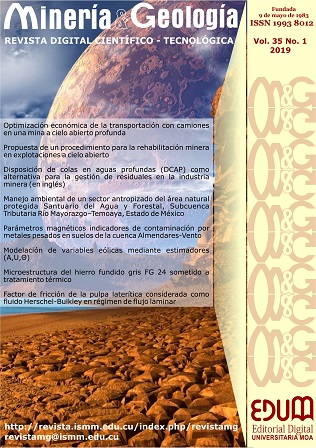Environmental management of an anthropised sector of the protected natural area "Santuario del Agua y Forestal, Subcuenca Tributaria Mayorazgo River-Temoaya", in Mexico
Keywords:
environmental management, protected areas, community management, Communal land Santa Ana Mayorazgo.Abstract
In order to guarantee the protection, conservation, restoration and use of natural resources (water, soil, forest and biodiversity) of an anthropised sector belonging to a protected natural area of the State of Mexico, a management proposal based on a detailed field survey, which allowed to diagnose the main environmental problems is made. After extensive community work, awareness and discussion of best wishes for caring and conservation of the property, a management plan agreed with the community was established, where strategies and action strategies are established according to priority levels. Communal management is maintained as an inseparable element of the process. The project is an example of conjugating the professional area and the citizen involvement in environmental matters in order to preserve the environment.Downloads
References
Comisión Nacional Forestal. 2009: Restauración de Ecosistemas Forestales – SEMARNAT. Jalisco, México, 63 p. Disponible en: http://www.conafor.gob.mx:8080/documentos/docs/7/579Restauraci%C3%B3n%20de%20ecosistemas%20forestales.pdf
Comisión Nacional Forestal. 2010: Prácticas de Reforestación manual básico. Jalisco, México: Gerencia de Reforestación de la Coordinación General de Conservación y Restauración de la Comisión Nacional Forestal. 66 p. Disponible en: http://www.conafor.gob.mx/BIBLIOTECA/MANUAL_PRACTICAS_DE_REFORESTACION.PDF
Comisión Nacional Forestal. 2012: Criterios técnicos para la ejecución de los proyectos de conservación y restauración de suelos – SEMARNAT. Jalisco, México, 72 p.
Diario Oficial de la Federación. 2000: Norma Oficial Mexicana NOM-059-ECOL-2001, Protección Ambiental-Especies Nativas de México de Flora y Fauna Silvestres - Categorías de Riesgo y Especificaciones para su Inclusión, Exclusión o Cambio - Lista de Especies en Riesgo. Ciudad de México: Secretaría de Medio Ambiente y Recursos Naturales. 84 p.
Diario Oficial de la Federación. 2018: Ley General de Desarrollo Forestal Sustentable. Ciudad de México: Secretaría de Medio Ambiente y Recursos Naturales. 85 p.
Elbers, J. 2011: Las áreas protegidas de América Latina: Situación actual y perspectivas para el futuro. Quito: UICN. 227 p. Disponible en: https://portals.iucn.org/library/efiles/edocs/2011-019.pdf
Gómez, D. 2014: Recuperación de espacios degradados. Madrid: Editorial Mundi-Prensa. 580 p.
INEGI (Instituto Nacional de Estadística y Geografía). 2009: Prontuario de información geográfica municipal de los Estados Unidos Mexicanos. Clave geoestadística 16059. Disponible en: http://www3.inegi.org.mx/contenidos/app/mexicocifras/datos_geograficos/16/16059.pdf
INEGI (Instituto Nacional de Estadística y Geografía). 2010: Censo de Población y Vivienda. México. Disponible en: http://www.beta.inegi.org.mx/proyectos/ccpv/2010/
INEGI (Instituto Nacional de Estadística y Geografía). 2015: México. Disponible en: http://www.snieg.mx/Contenidos/espanol/Programas/PAEG_2015.pdf
Iturbe, R. 2010: ¿Qué es la Biorremediación? Consulta 30 marzo 2018. Disponible en: http://www.dgdc.unam.mx/assets/cienciaboleto/cb_11.pdf.
Meli, P. y Carrasco, V. 2011: Restauración ecológica de riberas Manual para la recuperación de la vegetación ribereña en arroyos de la Selva Lacandona. México, D.F.: Comisión Nacional para el Conocimiento y Uso de la Biodiversidad. 62 p.
Pedraza, L. F. 2014: Análisis y evaluación del impacto ambiental de los procesos de urbanización campestre en el sector de la cuenca media-baja del rio Teusacá, municipios de la Calera, Guasca y Sopó. Armando Sarmiento López (Tutor). Tesis de maestría. Pontificia Universidad Javeriana Facultad de Estudios Ambientales y Rurales. Bogotá, D.C. 111 p.
Pérez, C. J.; Obando, M. y Miranda, J. C. 2005: Recuperación de fuentes de agua en las laderas del trópico seco de Nicaragua. Managua: Programa para la Agricultura Sostenible en Laderas de América Central (PASOLAC). 40 p.
Registro Agrario Nacional. 2016: México. Disponible en: https://www.gob.mx/ran
Rodríguez, M. L.; López, J. y Vela, G. 2013: Indicadores ambientales biofísicos a escala detallada para la planeación territorial en Milpa Alta, Centro de México. Investigaciones Geográficas, (80): 21-35.
San Juan, C. y Ortego, Y. 2000: Conflictos socioambientales y áreas protegidas en América Latina: Contextos y métodos de intervención en el caso boliviano. Intervención Psicosocial, 9(2): 247-258.
Published
How to Cite
Issue
Section
Copyright (c) 2019 Omar Moreno-Santana, Alexis Ordaz-Hernández, Edgar Ángeles-Moreno, José E. Baró-Suarez

This work is licensed under a Creative Commons Attribution-NonCommercial 4.0 International License.
- Authors retain copyright and guaranteeing the right magazine to be the first publication of the work as licensed under a Creative Commons Attribution-NonCommercial that allows others to share the work with an acknowledgment of the work's authorship and initial publication in this journal.
- Authors may establish separate supplemental agreements for the exclusive distribution version of the work published in the journal (eg, place it in an institutional repository or publish it in a book), with an acknowledgment of its initial publication in this journal.
- Authors are allowed and recommended to disseminate their work through the Internet (e.g., in institutional telematic archives or on their websites) before and during the submission process, which can produce interesting exchanges and increase citations of the published work. (See The effect of open access)










